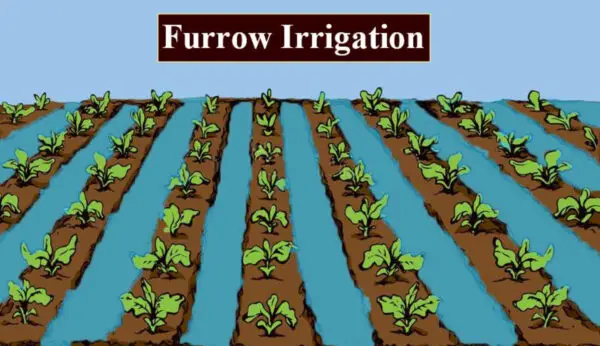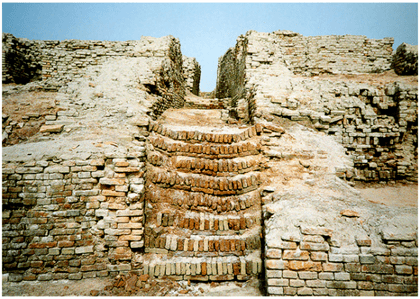Canal irrigation refers to the transportation of water over long distances using a network of artificial canals for crop irrigation and other agricultural purposes.
With ancient origins dating back thousands of years, canal irrigation continues to be vital for farming across the globe today.
By constructing canals to transport water for long distances from sources like rivers and lakes to agricultural lands, the reliability of crop cultivation was significantly improved.
The canal network acts like arteries that cut across vast spans of land to bring water to farms and fields.
This directed movement of water gives farmers control over crop irrigation rather than relying solely on seasonal rainfall.
Sophisticated irrigation canal systems were built thousands of years ago in Mesopotamia, Egypt, China and India, some stretching hundreds of miles.
Modern canal irrigation still plays a huge role in agriculture.
Canal water is ideal for irrigation as sediments and suspended particles settle, making it less erosive for soil health compared to river water.
However, canals need regular maintenance and efficient water management is necessary as over-irrigation can degrade land quality over time.
But the merits of controlled water supply from irrigation canals have enabled agrarian economies over millennia.

History and Spread of Canal Irrigation
The oldest known canals for irrigation were built in the Mesopotamian region over 4000 years ago in what is modern Iraq and Syria.
Ancient Egypt saw large scale canal construction to connect the Nile river to distant farm lands.
In ancient India and China too, irrigation canals have existed for over 2000 years, some extending hundreds of miles.
Agriculturally productive empires depended critically on irrigation canals for food supply security to urban centers.
The advent of modern construction equipment has enabled faster, mechanized canal digging and lining with concrete. Major canal projects continue across Asia and the Middle East.
Key Functions of an Irrigation Canal
The main purpose of an irrigation canal system is to convey water for agricultural land irrigation from sources like reservoirs, rivers and lakes to destination farm lands.
Branch canals and delivery channels then distribute this water across the farmland area. Key functions include:
- Transporting volumes of water over long distances with minimal loss
- Providing water elevation differences for gravity flow
- Regulating and controlling water discharge rates to farms
- Enabling periodic water storage for reliability
- Drainage of excess irrigation water
types of canal irrigation systems
- Main Canal and Branch Canal System
- The most common type
- Main canal carries water from source to region
- Branch canals distribute water into farms
- Has control structures to regulate flow
2. Inundation Canals
- Used in floodplains and deltas
- Water flows over canal banks to flood plains
- Overflow weirs help regulate water levels
- Common in Asia and Egypt historically
3. Contour Canals
- Digging along elevation contours
- Maintains uniform water slope gradient
- Enables controlled water flow with low heads
4. Tank Irrigation Canals
- Link canals connect lakes/tanks to store rainwater
- Used in drier regions like India
- Stocks water for irrigation in dry seasons
5. Runoff Collection Canal Systems
- Rainwater harvesting canals
- Channel runoff from land catchment areas
- Divert water to farms or recharge ponds
6. Lift Irrigation Canals
- Lifting water mechanically from lower levels
- Used where topography prevents gravity flow
- Employs pumps, undershot water wheels
7. Underground Water Channels (Qanats/Karez)
- Gently sloping tunnels carry groundwater via gravity
- Access shafts provide maintenance access
- Used in Middle East for millennia
The choice of canal irrigation system is guided by water availability, terrain, soil conditions, and cropping patterns to enable efficient water provision for agriculture.
Merits of Canal Irrigation
Advantages of canal irrigation are:
- Predictable water supply for crop growth cycles through all seasons
- Minimizes over-exploitation of groundwater
- Limits soil erosion and land degradation from uncontrolled flooding
- Sedimentation en-route increases fertility downstream
- Allows expansion of agriculture to arid regions
- Controlled water application prevents waterlogging and soil salinity
- Provides easy inland transportation through navigable canals
- Facilitates hydroelectric power generation
Canal Layout Design Considerations
Key aspects in canal irrigation design are:
- Soil and topography along the alignment
- Source water volumes and seasonal variability
- Peak water demands for land area to be irrigated
- Length and slope gradients to balance excavation needs and gravity flow
- Lining methods – clay, concrete or geo-membranes
- Dimensions and flow velocity optimization
- Structures like aqueducts, tunnels, pipes and drainage works
- Operation and distribution of discharge rates

Common Challenges
Some persistent issues with canal irrigation are:
- Imperfect water-tightness leading to losses
- Breaches causing floods
- Sedimentation blocking canals
- Growth of aquatic weeds
- Infrastructure damage from poor maintenance
- Engineering errors like slope instability
- Lock gate or hydraulic structure malfunctions
- Overbuilding networks beyond recharge capacity
Recent Advancements
Several technological advancements are transforming traditional canal irrigation, such as:
- Automation of control gates and diversion units
- Real-time canal water level and flow monitoring
- Remote sensing data application for planning
- GIS-based evaluation of alignments
- Use of geo-membranes and polymers to prevent leakage
- Improved desilting by sediment flushing
The Future
Canal irrigation will continue playing a vital role for meeting global food demands given climate change pressures on reliable water availability.
Greater integration of engineering solutions with ecological impacts is needed for sustainability.
National projects like China’s Grand Canal restoration and India’s National Waterways Plan will also remake certain inland transportation networks by revitalizing canal connectivity.
Conclusion
From the earliest civilizations to the present, irrigation canals have enabled agriculture and societal growth by bringing water for cultivation to landscapes where rainfall itself was inadequate.
The science and technology behind efficient canal construction and water provision has been continually perfected over millennia.
Canal irrigation sustains modern agriculture through predictable supply even today across the arid grain and cotton growing belt of nations like India, Pakistan, China, Egypt and the United States.
As population expands further, canal irrigation infrastructure forms the very backbone of the world’s agricultural output and food security.
How do you build an irrigation canal?
Canals in fill are constructed above ground level by building embank- ments with soil brought from other locations or scraped from the adjacent field. For small canals, sometimes only one large embankment is constructed, and then the canal cross-section is excavated in the middle.
What is the slope of a canal?
Canal banks – These generally have a slope of 1:1.5. However this ratio is usually increased to 1:2 with sandy soils and decreased to 1:1 with clay soils.
How do you calculate canal capacity?
A method to estimate the canal capacity is given below. The method is based on the principle that the higher the maximum water depth in a canal, the larger will be its wetted cross-section and the higher will be the flow velocity. As the maximum allowed water level rises, the canal capacity increases.




